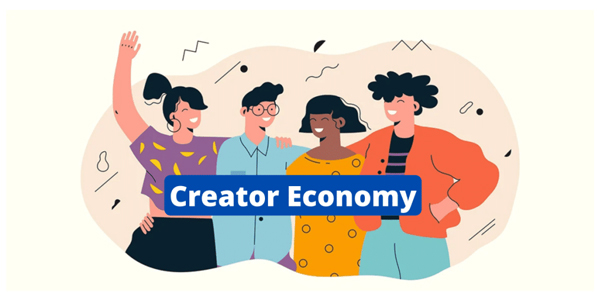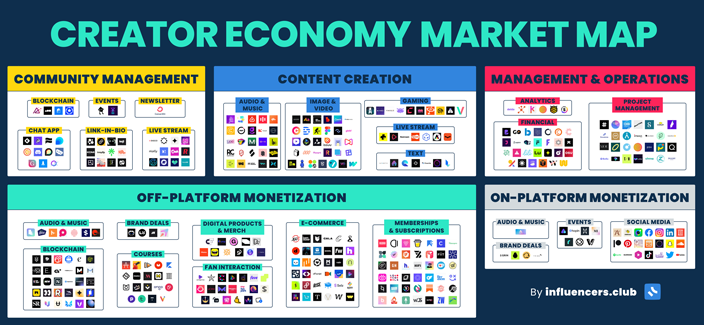According to Adobe, 1 in 4 people are contributing to the creator economy.
In 2023, the global creator economy was worth $250 billion, and according to an estimate by Goldman Sachs, it could roughly double in size over the next five years to $480 billion by 2027.
So, what exactly is the creator economy?
This article covers that and more questions like:
- What is a creator?
- How many creators are out there?
- How big is the creator economy?
- What are the creator economy trends of 2024?
So whether you’re a creator looking to get started, a founder looking for opportunities, or a marketer needing to understand the creator economy, this article has it all. Let’s get started!
Download database with
300+ creator-focused startups
What is the creator economy?
The creator economy is a diverse ecosystem that connects creators, audiences, digital platforms, marketers, and agencies.
It’s a system where creators make money online by producing and sharing content. They leverage platforms to connect with audiences and to find paid collaborations.
In the creator economy, creators profit from sharing their work, audiences enjoy customized content, and businesses gain access to niche markets and dedicated followers through partnerships with creators.
What is a creator?
A creator is someone who creates content for a particular audience in a specific niche. Most content creators can earn money through their content. This content can be in various forms, like videos, articles, podcasts, artwork, music, and social media posts.
Creators often leverage digital platforms to distribute content and engage with their audience. They can monetize their creations through different means, such as brand collaborations, sponsorships, advertising revenue, merchandise sales, subscriptions, and crowdfunding.
A 2023 ConvertKit study showed that only 39% of creators considered themselves full-time, 42% are part-time creators and 19% of creators are in it purely for enjoyment.
Part-time creators say that they can’t rely on content creation for financial income, so for full-time income they have to multitask different roles.
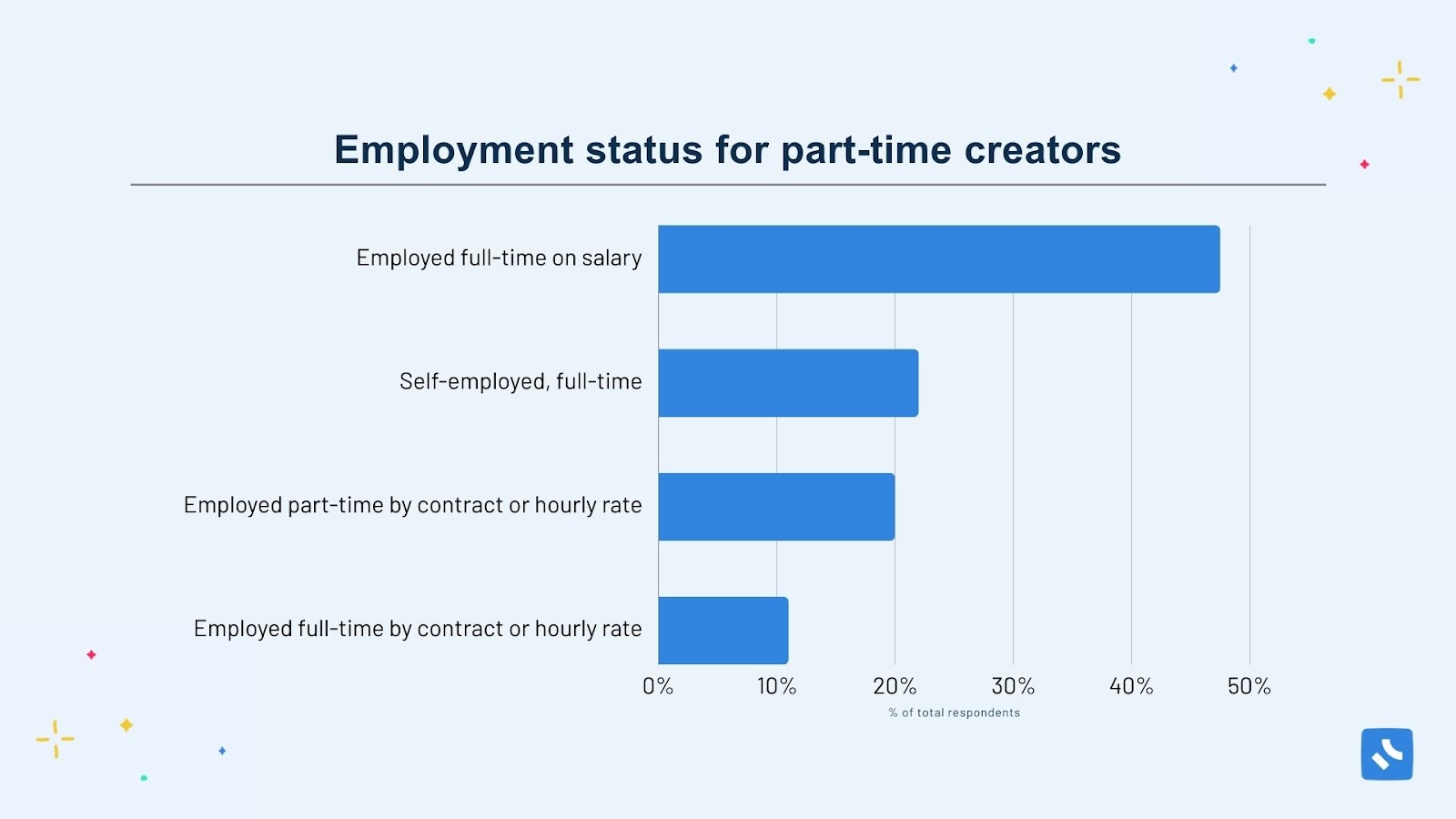
How many content creators are there?
It’s estimated that there are 303 million creators actively contributing to the global creator economy.
Let’s break it down a little further.
According to the State of the Creator Economy, 15% of creators left a traditional “9-to-5” to pursue their creator role in 2022. 39% of creators considered themselves full-time, while 42% ran their online business part-time.
The same report showed that 64% of creators identified as female were most likely to be part-time creators.
Types of creators
There are various types of creators creating and posting content on different platforms. Let’s look at a few different types:
- YouTubers and Vloggers are video creators who produce and share content primarily on YouTube. They cover many topics, including lifestyle, gaming, travel, education, entertainment, and more.
- Bloggers create written content on blogs or other online platforms. They may cover diverse topics such as personal development, technology, fashion, food, finance, etc.
- Podcasters create audio content typically organized into episodes and shared on platforms such as Spotify, Apple Podcasts, or dedicated podcast hosting platforms.
- Social media influencers build their audience by creating content across multiple platforms, including Instagram, TikTok, Twitter, and Facebook. They often collaborate with brands and promote products or services to their followers.
- Educators focus on sharing knowledge and expertise in specific domains, offering online courses, tutorials, or informative content to educate their audience. They are the most likely to earn over $100K from their creative businesses.
- Gaming streamers broadcast their gameplay sessions live on platforms like Twitch or YouTube, building an audience by engaging with viewers in real-time.
In 2023, the most common creator type was blogger, followed by digital content creators, educators, and coaches. Here’s a look at the popularity of each content creator type:
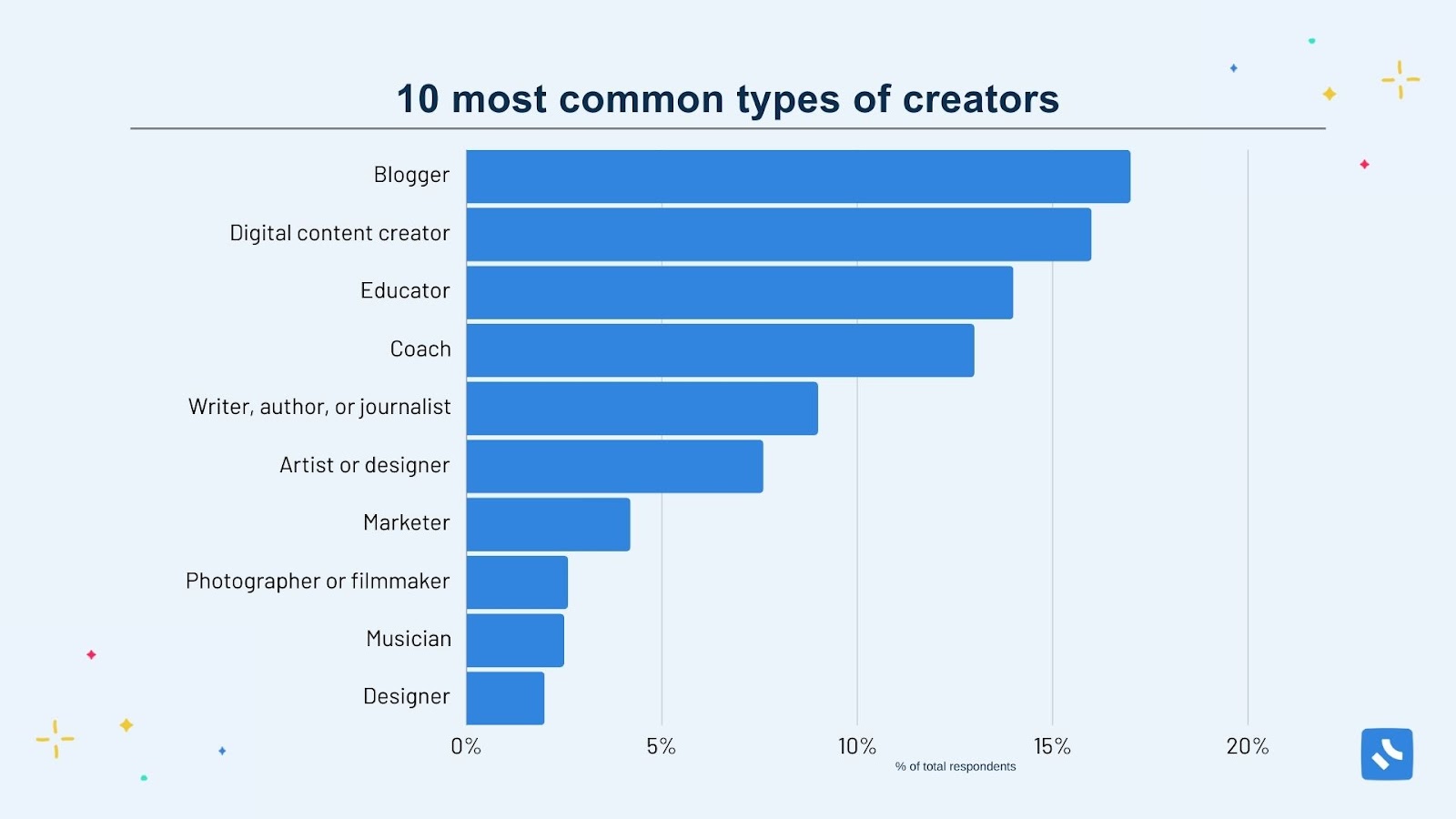
Brief creator economy history
Creators have always been here, but what changed these past 20 years is the evolution of the internet and the birth of social media platforms like YouTube, Instagram, TikTok, Twitter, etc.
Let’s have a look at where it all began and how it has evolved since.
- Rise of social media: The rise of social media platforms such as Facebook and YouTube in the mid-2000s created opportunities for individuals to gain attention from huge amounts of people.
- Monetization through ads: As social media platforms grew, they introduced monetization features, allowing creators to earn income through advertising. Creators could monetize their content by placing ads within their videos or alongside their posts, getting paid based on views, clicks, or impressions.
- Emergence of sponsored content: Brands recognized creators’ influence and began collaborating with them to promote products or services.
- Crowdfunding and patronage: Platforms like Patreon emerged, enabling creators to receive ongoing financial support from their fans and followers in exchange for exclusive content, merchandise, or access.
- Expansion of digital marketplaces: Online marketplaces like Etsy, Shutterstock, and Shopify emerged, allowing creators to sell their products, artwork, photography, or services directly to consumers. These platforms democratized access to a global customer base, allowing creators to monetize their skills and creations.
- Influencer marketing and brand collaborations: Brands increasingly recognized the impact of influencers and began investing in influencer marketing campaigns. Creators with significant followings and engaged audiences became sought-after partners for brands, leading to a thriving ecosystem of brand collaborations.
- Platforms dedicated to creators: Platforms such as YouTube, Twitch, TikTok, and Substack started introducing features specifically aimed at supporting creators. These platforms offered monetization features, access to analytics, and expanded opportunities for creators to generate income through ads, memberships, live streaming, subscriptions, and more.
- Rise of NFTs: Non-fungible tokens (NFTs) have opened up new possibilities for creators to tokenize and sell digital assets such as art, collectibles, or music directly to buyers, leveraging blockchain technology for ownership and authenticity verification.
The creator economy continues to evolve rapidly, with more opportunities for creators to build sustainable businesses and monetize their talent, creativity, and expertise.
How big is the creator economy?
As mentioned above, an estimated 300+ million creators are contributing to online space. According to the latest reports, Brazil, South Korea, and Spain have the highest concentration of creators, while the US, Brazil, and Germany have the biggest creator populations.
Since 2020, the creator economy has grown exponentially, with 52% of creators starting posting content between 2020 and 2022 and the growth continued ever since.
The creator economy is also very optimistic and ambitious, with almost 80% of creators expecting to make more from their business this year than last year.
Creator Platforms
Social media platforms enable creators to share their content with the world. From a monetization perspective, we classify creator platforms into two main categories:
- Social platform (or on-platform) monetization – When the platform itself pays the creator to create content and engage on there (e.g., YouTube’s ad revenue sharing model)
- Audience (or off-platform) monetization – When the creator makes money on the platform by monetizing their audience. They don’t receive any revenue from the platform itself (e.g., selling personalized video messages through Cameo, Web3 platforms, etc.)
Using algorithms, these platforms distribute content to relevant people, help creators become social media influencers, and create and grow an audience. These platforms are the base on which creators exist. Without them, creators and influencers, as we know them today, would not exist.
From a content format perspective, we categorize these platforms into:
- Video and streaming platforms: YouTube, Twitch, TikTok, Instagram, Facebook Live, OnlyFans, Patreon
- Image-based platforms: Instagram, Snapchat, Artstation, Behance, CG Society, Deviant Art, Pinterest
- Music and podcasting platforms: Soundcloud, Spotify, Itunes, YouTube
- Blogging: Twitter, Quora, Medium
YouTube has the most significant incentive for top creators because of the YouTube Partner program. While Instagram is the most popular platform for marketing content as more than 55% of creators use it to increase audience and engagement.
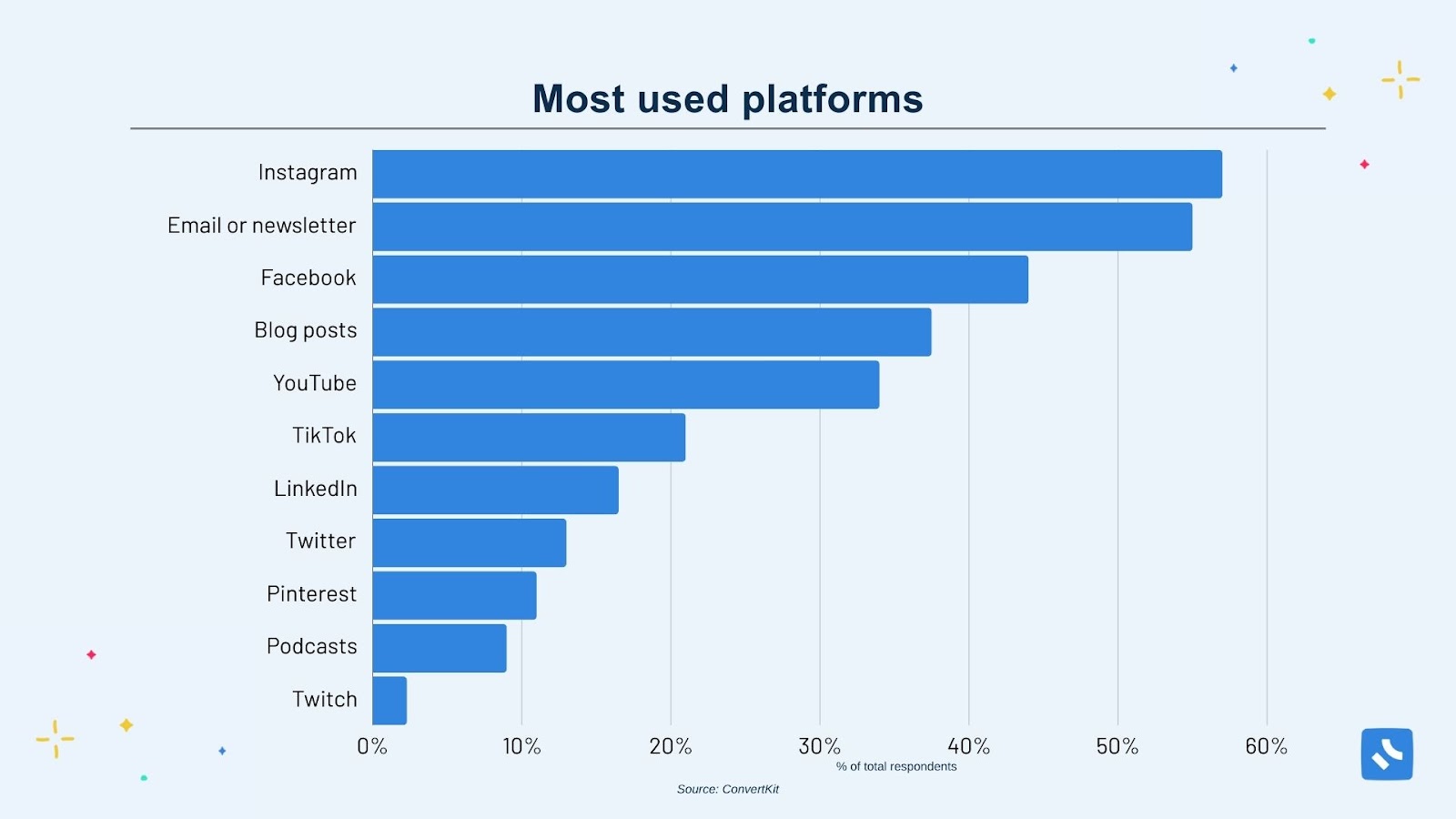
What does the creator economy offer?
The creator economy offers a mutual benefit for creators, brands, and customers. It allows creators to earn from their passion, it helps brands engage with their targeted audience and it provides consumers with engaging content and product recommendations.
Creators
The creator economy offers several benefits to creators. One significant advantage is the opportunity for monetization. The 2023 Content Entrepreneur Benchmark Research showed that 45% of creators rely on content creation as their primary source of income.
Creators can generate income through various means, including brand collaborations, sponsored content, merchandise sales, crowdfunding, direct fan support, and more. This enables creators to turn their passion into a sustainable career and generate revenue from their creative endeavors.
Additionally, the creator economy gives creators autonomy and control over their content and time. Even 71% of full-time creators and 77% of part-time creators create content to pursue their passion.
Brands
Insider Intelligence forecasts that the US influencer-marketing spend will hit $5.89 billion in 2024 and that its growth “will remain in the double digits” through 2025.
By partnering with creators, brands can tap into their highly engaged and loyal audiences, enabling them to reach new potential customers and increase brand awareness. These collaborations can give brands an authentic and trusted connection to their target audience, as creators often have a strong influence and credibility in their niche.
By collaborating with relevant creators, brands can showcase their products or services naturally and organically, effectively reaching their target market and driving sales. Such partnerships can generate positive brand associations and boost customer trust and loyalty.
Consumers
The creator economy empowers consumers with knowledge and expertise. Many creators share valuable insights, tips, and tutorials about their niche, allowing consumers to learn and acquire new skills.
Stats show that 3 in 10 people have purchased something after seeing an influencer or content creator post about it on social media. This shows that consumers rely on creators to provide them with the latest trends, product reviews, and brand suggestions.
How do creators make money?
76% of creators made income from their content in 2022, which was a 15% increase from 2021. 55% of these creators make less than $10,000 annually from their creator business, while only 12% of creators made more than $100,000 from their business in 2022.
There are various opportunities for creators to make money in the creator economy, some of which we discuss below:
1. Brand Collaborations and Sponsored Content
Creators partner with brands to create sponsored content or collaborate on campaigns. Brands pay creators to promote their products or services through their content or social media platforms.
2. Ad Revenue
Creators can earn money through advertisements placed on their content. Platforms like YouTube, Twitch, and blogs allow creators to monetize their content through ad revenue-sharing programs.
3. Merchandise Sales
Many creators sell merchandise such as apparel, accessories, or digital products related to their brand. This includes items like t-shirts, hats, stickers, e-books, online courses, and more.
Creators in different niches sell different products. In the beauty community, for example, creators sell makeup products, while in the fitness industry, creators market their own supplements or workout accessories.
4. Crowdfunding
Creators may utilize platforms like Patreon, Kickstarter, OnlyFans, or Ko-fi to receive monetary support from their fans. They can offer exclusive content or perks in return for regular contributions.
5. Affiliate Marketing
Creators can earn money through affiliate marketing by promoting and recommending products or services in their content. They receive a commission or referral fee when their audience purchases through their unique affiliate links.
6. Courses and Workshops
Some creators organize or participate in events, workshops, or speaking engagements where they can earn income through ticket sales, sponsorships, or collaborations.
Successful examples of campaigns in the creator economy
Topicals, a skincare line, hosted a sponsored trip in Bermuda and collaborated with smaller creators. The creator trip resulted in 3 million impressions with an increase of 5000 followers across Instagram and TikTok.
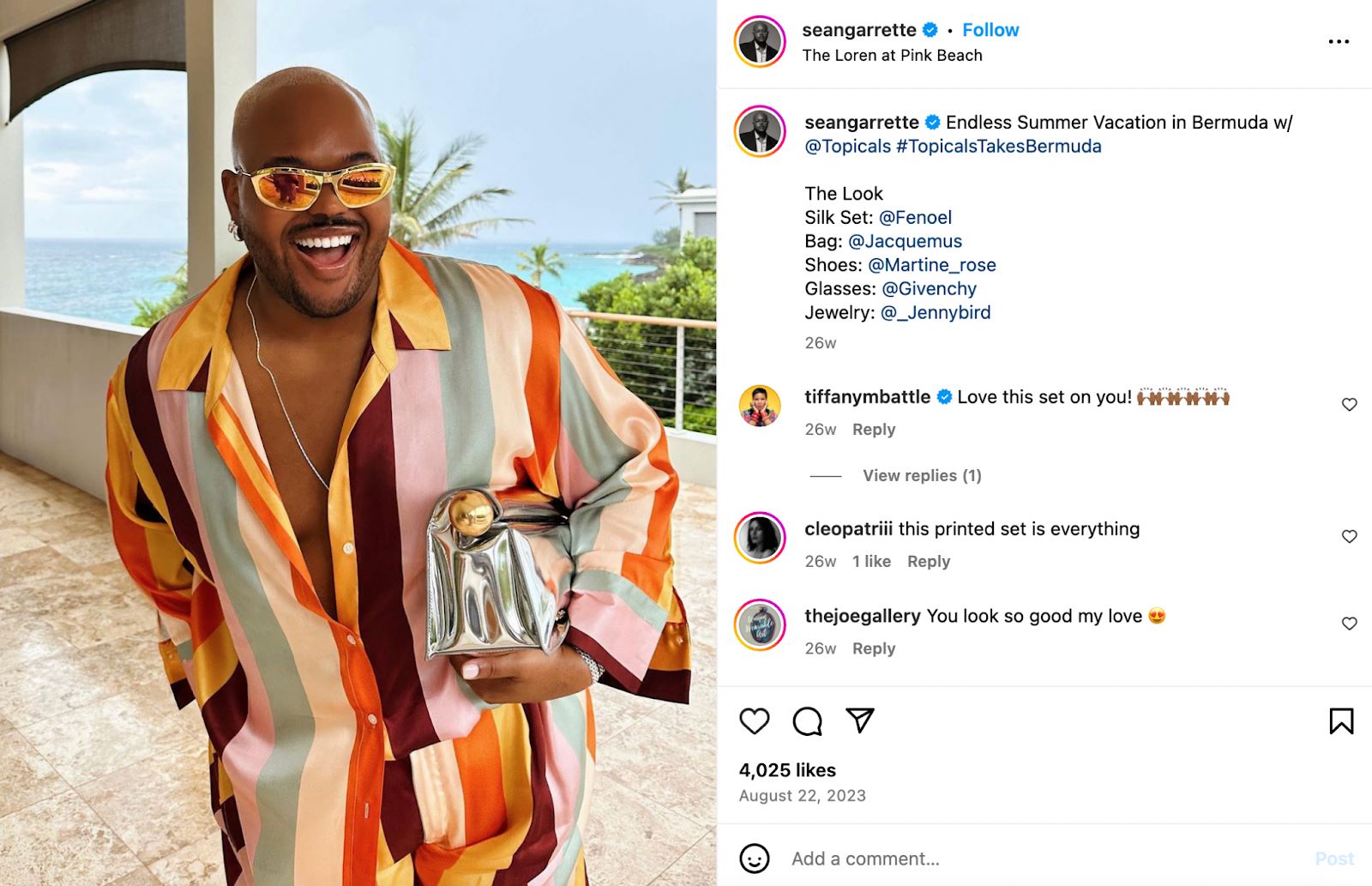
Gymshark, an athleisure brand, partnered with six fitness creators on TikTok for their #Gymshark66 challenge, and the campaign resulted in nearly 2 million likes and an engagement rate of 11.1%.
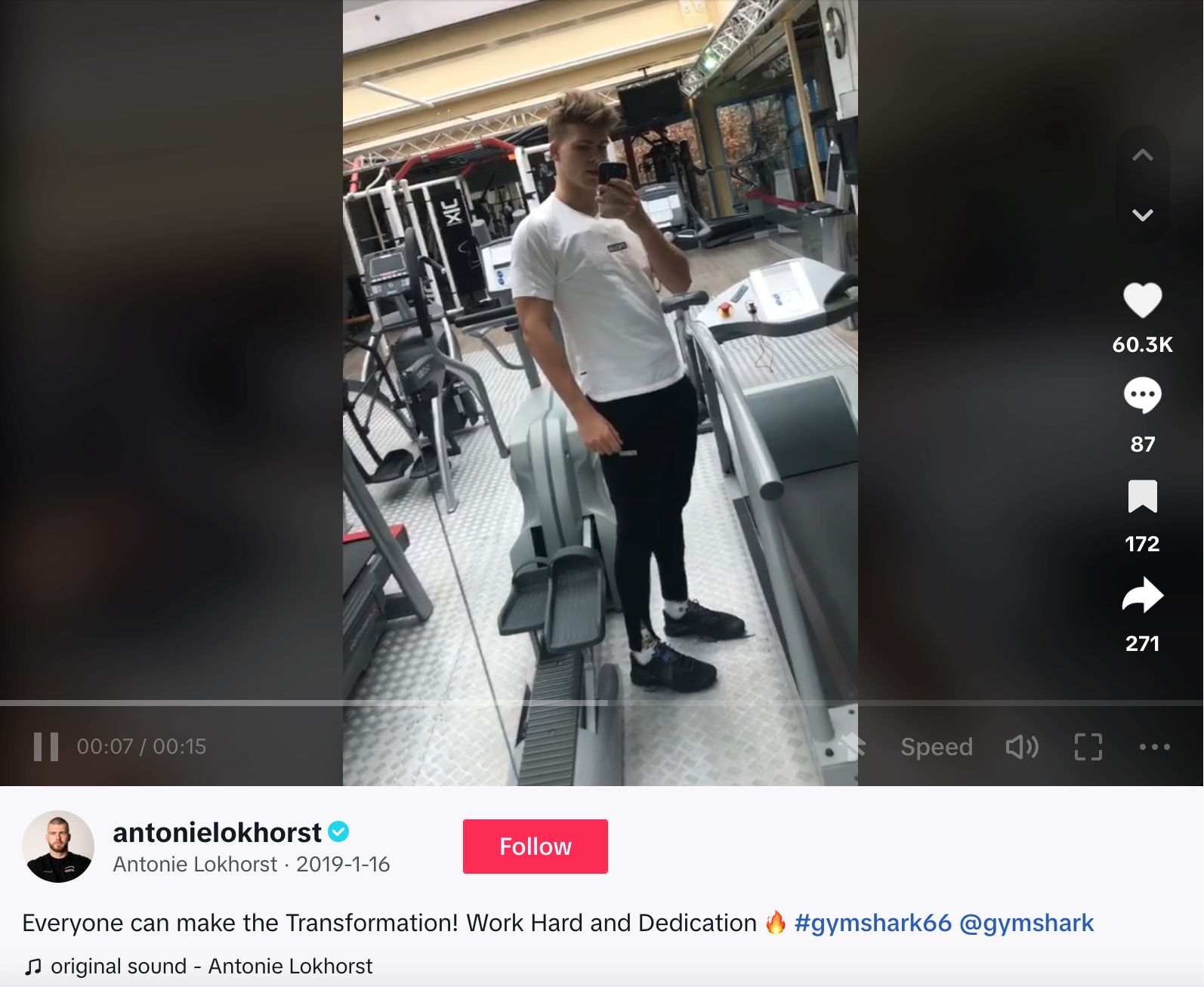
HelloFresh, a meal-kit company, collaborated with 15 micro-creators to participate in a 21-day challenge to cook healthy meals from scratch and try out various HelloFresh recipes. The campaign resulted in 5.5 million impressions.
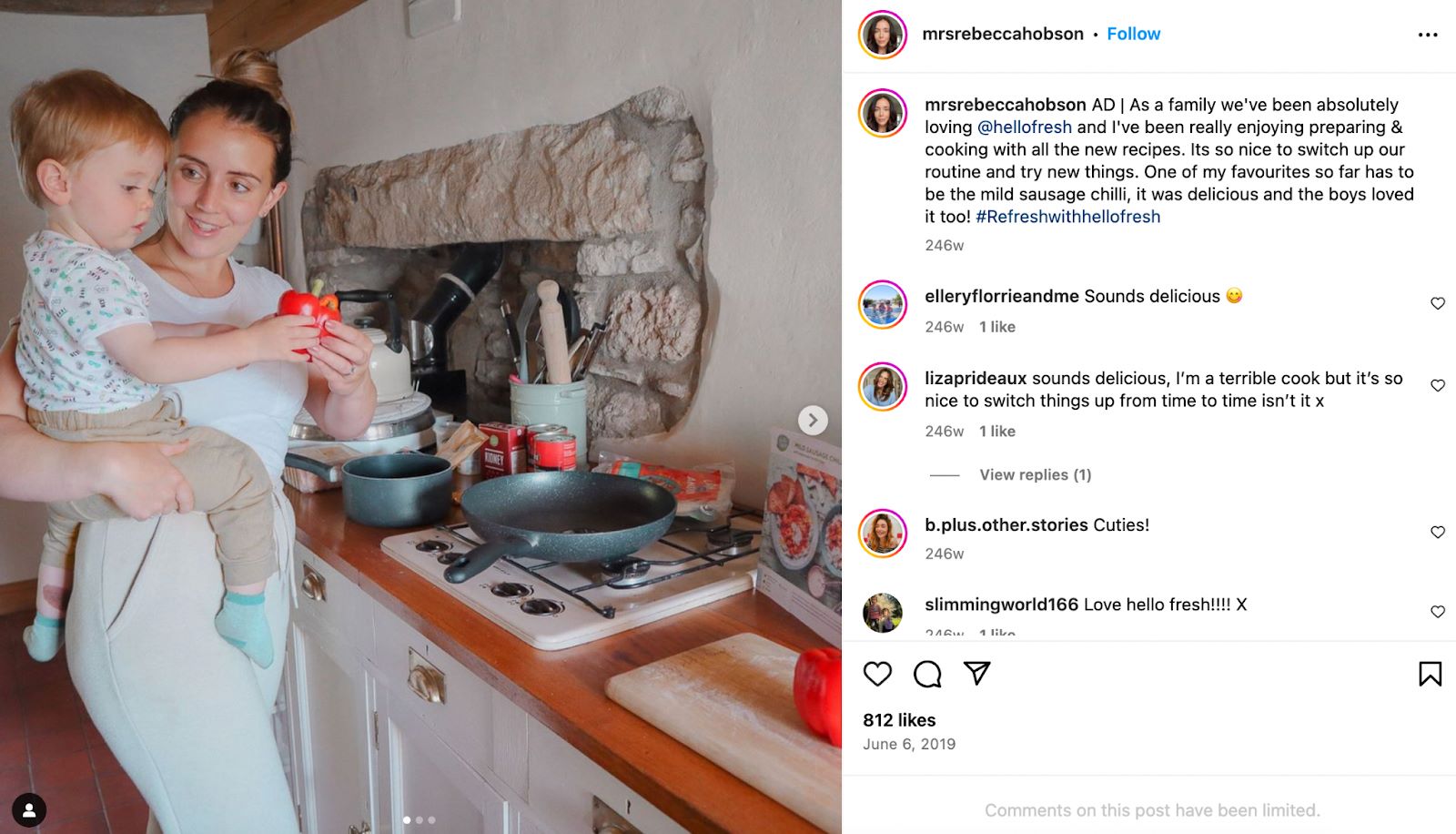
How influencers.club helps startups find creators
Influencers.club is the only creator discovery and outreach platform designed for effective creator outreach.
We focus on building genuine connections with creators which makes our process more effective and allows us to focus on providing the best creator partnerships for our clients.
In the past few years we worked with some of the biggest companies in the creator economy, including Linktree, Pearpop, Jellysmack, etc. Here’s how we help them:
- Sourcing Creators: We have an extensive and accurate database of 80M+ creators. You can filter our database and create a list of target creators based on their location, category, keywords in their bio, past brand collaborations, links they promote, and 40 more filters.
- We know how to approach, communicate, and negotiate with creators: We have a results-oriented approach. We can send up to 5M emails per month, with a 49,5% average open rate. Our secret is personalized outreach emails and follow-ups that show we understand and value their work.
- Data-driven approach: Not only do we find ideal creators for brands based on our detailed creator data, but we track and measure efforts transparently, provide weekly reports, and offer a metrics-driven approach to maximize outcomes.
Are you targeting creators?
If you want a dedicated 6-person team dedicated to finding and reaching out to creators on your behalf, let’s talk.
Funding in the creator economy
While the creator economy itself is still growing, venture capital in the sector has cooled since the early pandemic days. The creator economy saw an incredible increase in funding and investors in the past couple of years.
But, it started its downward spiral in 2021 with only $180 million invested in Q4 2022 in the US, compared to the ~$500 million invested in the space in each quarter since Q1 2021.
The funding continued to decrease by 58% to just $1.7 billion while funding for U.S. startups alone fell by 62% in 2023. At least 8 creator economy startups shut down, which is twice the amount shut down in 2022, and 36 startups merged or acquired in 2023.
Why the decline?
Well, this decline might be due to several factors, including the threat of a recession, widespread layoffs, and startups raising at tempered valuations. According to Business Insider, the creator economy is having an identity crisis, as creator economy startups are not becoming big money-makers as predicted before.
So, what’s next for creators?
Creators might see a reduction in income, particularly those who depend on brand partnerships. While 15% of creators left a traditional “9-to-5” to pursue their creator role in 2022, it might change with less uncertainty in the creator space.
But according to the CEO of Kensington Grey Agency, Shannae Ingleton Smith, “We are seeing more and more people becoming creators. Where the advertising dollars are, to me, is a great indication of sustainability.” As Business Insider reports, spending on sponsored content on social media will reach nearly $6 billion in 2024 in the US alone.
10 creator economy investors and popular investments
- Charles River Ventures — Zendesk, Twitter, Ring
- Animal Capital — Workweek, Trips, Zurp
- Behind Genius Ventures — Beacons, Capsule, Creator Testing, Statusphere
- Crossbeam Venture Partners — Infinite Canvas, Warren James, Spotter
- SignalFire – Superdao, Storycraft, Karat, Clubhouse, RedCircle, Flymachine, Truffle, OneSignal.
- Crush Ventures — Beacons, Levellr, CreateSafe, Sound.xyz
- Hustle Fund — Canopy, Karat, ReachMe, Rivet, Slic TV
- Lightspeed Venture Partners — Beehiiv, Gardens, Circle Lab, Joopiter, Lightyear
- Liquid 2 Ventures — CreatorDAO, Oneof, Rella, 1stCollab
- MaC Venture Capital — Take Back the Mic, Spill, Mansa
List Of Top 100 Creator Economy Investors
Creator economy trends in 2024
As the creator space evolves year after year, new trends emerge that define the current generation of creators and startups. For 2024, we predict the following most impactful trends.
Impact-driven creators
An Edelman survey reports that 73% of Gen Z buys from brands based on their values and beliefs. The same survey found that Gen Z believes that the role of businesses is to serve communities and society at large, and they expect the brands they support to reflect their values and contribute positively to society.
This shows that impact-driven creators, who are clear on their own values and show it through their content, are on the rise. Creators who prioritize social issues that resonate with their audience and demonstrate a commitment to positive social impact have the opportunity to cultivate a loyal following among Gen Z and create more significant positive change.
Jim Louderback, founder of Inside the Creator Economy newsletter, says, “Creators will turn down brands that don’t align with their mission, content, and opinions and will continue to share brand horror stories with each other. You can expect creators to call even more of the shots in 2024 – and build their own brands, too.”
Multiple platform presence
We talked to 63 creators on TikTok to learn how much money they made in 2023. Despite having a follower range of 90K to 110K, the survey shows that over half of them made less than $1000. So, it shows that creators can’t just rely only on TikTok and that they need a cross-platform presence.
And in 2024, you’ll see creators doubling down on multiple platforms to reach a wider audience and diversify their reach. This trend is driven by the growing importance of platforms like TikTok, Instagram, YouTube, Twitch, and others. Creators will need to understand the nuances of each platform, tailor their content accordingly, and leverage the unique features and algorithms to maximize their visibility and engagement.
Focus on community building
Creators are becoming founders
In 2024, creators will increasingly transition from solely content creation to entrepreneurial roles as founders. They will leverage their influence, expertise, and audience to build their own brands and businesses. This trend is driven by the desire for creators to have more control and ownership over their creative work and monetization opportunities.
Creators may venture into launching their own product lines, starting media production companies, or becoming investors and mentors to other creators.
Micro-creators in high demand
The rise of micro-creators, individuals with smaller but highly engaged communities, will become more prominent in 2024. These creators can have a niche focus and build passionate communities around their content.
People who run their content business as a full-time endeavor have an average of just 4K followers across all channels.
So, it shows that brands and marketers recognize the value of micro-creators and will increasingly seek collaborations, as the smaller scale allows for more targeted and authentic campaigns. Platforms and tools will also evolve to support the growth and monetization of micro-creators, offering them specialized support and opportunities.
So, what’s next?
The creator economy has revolutionized how individuals create, share, and monetize their content. The rise of social media, influencer marketing, and brand collaborations has enabled creators to gain recognition, build engaged communities, and generate income through ads, sponsored content, and partnerships.
And while the creator economy funding is dwindling, the global creator economy market is on the rise. So, as we move forward, the creator economy holds immense potential not only for creators but also for brands, consumers, and the broader digital ecosystem.
Are you targeting creators?
We can find and reach out to your ideal creators from any platform, location, niche, and other criteria.

